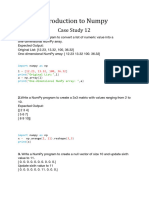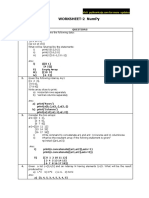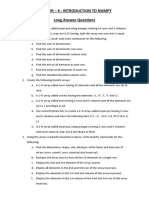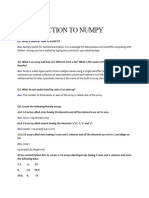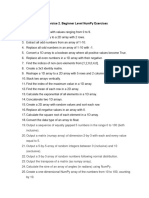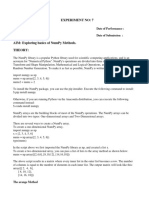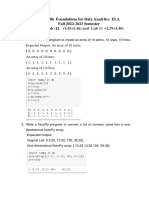0% found this document useful (0 votes)
117 views2 pagesNUMPY Practice
The document provides a series of NumPy programming exercises, including converting a list to a one-dimensional array, creating a 3x3 matrix with specific values, generating an array with a range of numbers, and reversing an array. Each exercise includes code snippets demonstrating the use of NumPy functions such as array creation, arange, and slicing. The expected outputs for each exercise are also specified.
Uploaded by
Neha MakhijaCopyright
© © All Rights Reserved
We take content rights seriously. If you suspect this is your content, claim it here.
Available Formats
Download as DOCX, PDF, TXT or read online on Scribd
0% found this document useful (0 votes)
117 views2 pagesNUMPY Practice
The document provides a series of NumPy programming exercises, including converting a list to a one-dimensional array, creating a 3x3 matrix with specific values, generating an array with a range of numbers, and reversing an array. Each exercise includes code snippets demonstrating the use of NumPy functions such as array creation, arange, and slicing. The expected outputs for each exercise are also specified.
Uploaded by
Neha MakhijaCopyright
© © All Rights Reserved
We take content rights seriously. If you suspect this is your content, claim it here.
Available Formats
Download as DOCX, PDF, TXT or read online on Scribd
/ 2


